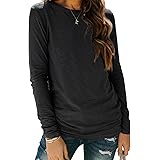Imagine this: you have a significant event coming up – perhaps a wedding, a crucial job interview, or a landmark celebration. You want to look your absolute best, exuding confidence and style. The image in your mind is clear: a perfectly tailored suit that fits like a second skin, making you feel unstoppable. Then, you step into a store, try on a few “standard” sizes, and the dream starts to fray. The shoulders are too wide, the sleeves too long, the trousers bag in odd places. It’s a familiar dilemma for many, and it brings us to the heart of the matter explored in the accompanying video: the age-old debate of a custom suit versus an off-the-rack option.
While the video provides a fantastic visual overview of these distinct paths to sartorial excellence, this guide will delve deeper, dissecting the nuances, benefits, and considerations of each. Understanding the fundamental differences between buying a ready-made garment and investing in something specifically crafted for you is crucial for making an informed decision that aligns with your needs, budget, and personal style aspirations.
What Defines a Suit: Understanding the Key Distinctions
Before we fully plunge into the comparison, it’s essential to clarify the three main categories of suits you’ll encounter in the market. Each offers a different level of personalization and construction, significantly impacting fit, feel, and price.
Off-the-Rack (Ready-to-Wear) Suits
This is the most common and accessible option. Off-the-rack suits are mass-produced in standard sizes, designed to fit a general public rather than an individual. They are readily available in department stores and menswear shops, offering immediate gratification for those needing a suit quickly.
Made-to-Measure Suits
A step up from off-the-rack, made-to-measure suits blend elements of mass production with personalization. A suit is created from an existing pattern that is then adjusted to your specific body measurements. You typically select fabrics, linings, and details, allowing for a degree of individual expression.
Bespoke Suits
Representing the pinnacle of tailoring, bespoke suits are entirely hand-crafted from a unique pattern drafted specifically for you. Every detail, from the initial measurements to the final buttonhole, is created to your specifications. This process involves multiple fittings, ensuring an unparalleled fit and truly personalized garment.
The Fit Factor: Where the Rubber Meets the Road
The single most defining characteristic that separates a custom suit from an off-the-rack garment is the fit. A suit isn’t merely clothing; it’s an architectural garment designed to enhance your silhouette, and how it drapes on your body makes all the difference.
Off-the-Rack Suit Fit: The Compromise
When you purchase an off-the-rack suit, you are essentially buying a suit built for an idealized average body type. It’s like buying a one-size-fits-all gadget – it might work, but it won’t be optimized for *your* specific needs. Shoulders might be too wide, the jacket waist too loose, or the sleeve length off, leading to a less-than-polished appearance.
However, this doesn’t mean off-the-rack suits are inherently bad. They serve a vital purpose for quick needs or tighter budgets. The key is to factor in the cost and time for alterations. A skilled tailor can work wonders on a ready-to-wear suit, bringing in the waist, adjusting sleeve and trouser lengths, and refining the overall silhouette. Yet, there are limits; fundamental changes to the shoulder width or jacket length can be prohibitively expensive or even impossible.
Made-to-Measure Suit Fit: Personalization within a Framework
Moving into the made-to-measure realm is akin to upgrading from a standard car model to one with selected factory options. The basic chassis remains, but you get to choose the engine, interior trim, and paint color. Here, a tailor takes your measurements and applies them to an existing “block pattern,” which is then scaled and modified to fit you better. This process significantly improves the fit compared to off-the-rack, addressing common issues like sleeve length, jacket length, and trouser rise more accurately.
Made-to-measure allows for a much more nuanced fit around critical areas like the shoulders, chest, and waist. While not a fully unique pattern, the adjustments made ensure a garment that contours to your body more precisely. This option offers an excellent balance between cost, speed, and a significantly improved fit, making it a popular choice for professionals and those looking to elevate their wardrobe.
Bespoke Suit Fit: The Ultimate Tailored Experience
A bespoke suit is the sartorial equivalent of a custom-built supercar, designed from the ground up to your exact specifications. From the initial consultation, a master tailor takes dozens of measurements, observing your posture, shoulder slope, and any unique body characteristics. A unique paper pattern is then drafted specifically for your body, ensuring an unparalleled fit that accommodates every nuance of your physique.
The bespoke process involves multiple fittings – typically two to four – during which the tailor sculpts the suit directly on your body. This iterative approach allows for minute adjustments, ensuring a flawless drape, perfect balance, and maximum comfort. The result is a suit that truly feels like a second skin, enhancing your natural lines and providing a level of confidence that only a truly custom garment can offer.
Fabric and Construction: The Inner Workings
Beyond fit, the quality of materials and the method of construction play a pivotal role in a suit’s durability, drape, and overall appearance. These elements often correlate directly with the suit’s category.
Quality Variations: The Foundation of a Suit
Off-the-rack suits often use more standardized fabrics, ranging from synthetic blends to entry-level wools. While perfectly functional, the choices are usually limited to what the manufacturer has in stock. Construction often involves “fused” interlinings, where a stiff material is glued to the suit fabric. While cost-effective, fused suits can sometimes bubble or delaminate over time, especially after dry cleaning.
Made-to-measure options typically offer a broader selection of higher-quality wools, such as Super 100s to Super 150s, along with various patterns and colors. Construction often includes “half-canvas” interlinings, where a canvas material is stitched (rather than glued) to the lapel and chest area. This provides a more natural drape and greater durability than fused construction, allowing the suit to mold to your body over time.
Bespoke suits provide an almost limitless selection of premium fabrics from renowned mills worldwide – think superfine merino wools, cashmere, silk, or luxurious blends. The construction is always “full-canvas,” meaning a canvas interlining runs throughout the entire jacket. This allows the suit to breathe, move with your body, and develop a beautiful, natural drape that improves with wear. The hand-stitching and attention to detail in bespoke construction are simply unmatched.
Material Selection: Expressing Your Style
The ability to select your fabric and design details is a significant draw for custom suits. With made-to-measure, you can choose the fabric weight, pattern, lining, buttons, and even lapel style. Bespoke takes this even further, allowing for personalized monograms, unique pocket configurations, and specialized finishing touches that truly make the suit your own.
Cost vs. Value: An Investment Perspective
The price tags on suits can vary wildly, but it’s essential to look beyond the initial outlay and consider the long-term value. A suit isn’t just an expense; it can be an investment in your personal and professional image.
Understanding the Price Tags
Off-the-rack suits are typically the most affordable, ranging from a few hundred dollars to over a thousand for designer brands. However, remember to factor in potential alteration costs, which can add another $50-$200. Made-to-measure suits usually fall in the mid-range, often starting around $800 and going up to several thousand, depending on fabric and customization options. Bespoke suits represent a premium investment, typically starting from $3,000 and easily reaching five figures, reflecting the unparalleled craftsmanship and personalized service.
Long-Term Durability and ROI
A well-fitting, high-quality suit constructed with superior materials will undoubtedly last longer and retain its appearance better than a cheaper, ill-fitting alternative. The natural drape of a half-canvas or full-canvas suit helps it resist creasing and maintain its shape over years of wear. While the upfront cost of a custom suit is higher, its extended lifespan, timeless style, and the confidence it instills can offer a far greater return on investment, especially for those who wear suits regularly.
Time Commitment: Instant Gratification vs. Anticipation
Your timeline for needing a suit will also significantly influence your choice. Some occasions simply don’t allow for an extended waiting period.
An off-the-rack suit offers almost instant gratification. You can walk into a store, find a suit, pay for it, and potentially wear it that day (though alterations are highly recommended, adding a few days to a week). This is ideal for last-minute events or unexpected needs.
Made-to-measure suits require patience. Once your measurements are taken and selections made, it typically takes 4-8 weeks for the suit to be constructed and delivered. This allows for the personalization process and offshore production time often associated with this category.
Bespoke tailoring demands the most significant time commitment. The process, from initial consultation and pattern drafting to multiple fittings and final delivery, can take anywhere from 2 to 6 months. This extended timeline is a testament to the meticulous handwork and precision involved in creating a truly unique garment, making it unsuitable for urgent needs.
When to Choose Which: Your Personal Suit Strategy
The “best” option isn’t universal; it depends entirely on your specific circumstances, budget, and desired outcome.
Off-the-Rack Suit: Practicality and Speed
Choose off-the-rack if you need a suit quickly, have a limited budget, or only wear a suit infrequently. It’s also a good starting point for building a basic wardrobe, especially if you have an easily accommodating body type. Always plan for professional alterations to maximize its potential.
Made-to-Measure Suit: Elevated Style and Value
Opt for made-to-measure if you wear suits regularly, desire a significantly improved fit and personalization, and appreciate higher quality fabrics and construction. This option provides excellent value, bridging the gap between convenience and true customization without the premium price and time commitment of bespoke.
Bespoke Suit: Unrivaled Luxury and Precision
Invest in a bespoke suit for truly special occasions, if you have unique body proportions that make off-the-rack or even made-to-measure challenging, or if you simply demand the absolute best in craftsmanship and personalization. A bespoke suit is more than clothing; it’s a legacy piece, a statement of individuality, and a testament to the enduring art of tailoring.
Beyond the Basics: The Psychological Impact of a Well-Fitting Suit
Ultimately, the choice between a custom suit and an off-the-rack alternative goes beyond mere fabric and stitching. A well-fitting garment, especially a suit, has a profound psychological effect. It instills confidence, commands respect, and projects an image of professionalism and attention to detail. Whether it’s the subtle drape of a bespoke jacket or the crisp lines of a meticulously altered ready-to-wear suit, feeling good in what you wear translates into performing better and making a stronger impression.
Reflecting on the accompanying video and this detailed guide, consider your own needs and aspirations. The journey to finding the perfect suit is a personal one, and understanding your options is the first step toward making a sartorial choice that you’ll wear with pride.











